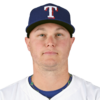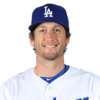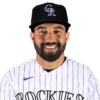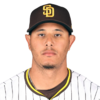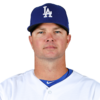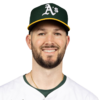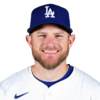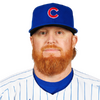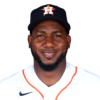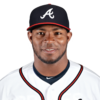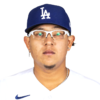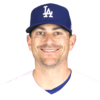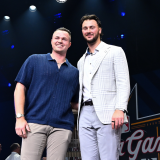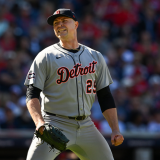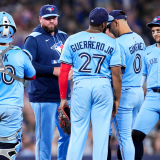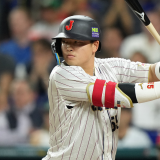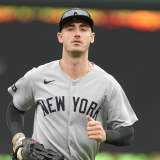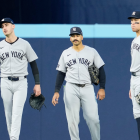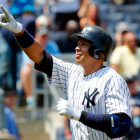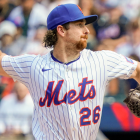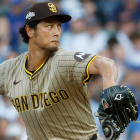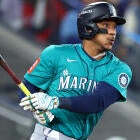World Series 2018: How the Dodgers built their NL champion roster through trades, free agency and the draft
The Dodgers have made some shrewd trades and done very well in the draft
For the second straight season, the Los Angeles Dodgers are National League champions. They dispatched the upstart Brewers in seven games in the NLCS. The Dodgers are now four wins away from their first championship since 1988. That is the 11th longest World Series drought in baseball.
Stream every 2018 World Series game on fuboTV (Try for free). For a complete look at the Fall Classic schedule, click here.
Like every team, the Dodgers were assembled through all sorts of different methods. No team is built exclusively through the draft, or trades, or free agency. It's not possible. Successful teams acquire talent through every avenue possible. Here is Los Angeles' 2018 WAR breakdown via the Baseball Gauge:
- Trades: 16.5 WAR (10th most in MLB)
- Free Agency: 6.6 WAR (12th)
- Draft: 17.0 WAR (4th)
- International Free Agency: 3.3 WAR (13th)
- Other: 6.5 WAR (4th)
The Dodgers have drafted extremely well and have otherwise been okay at everything else, at least relatively to the rest of MLB. Let's take a deeper look at how the Dodgers built the roster that carried them to the 2018 World Series.
The Draft

In a perfect world, teams would draft and develop their entire 25-man roster and never spend money on free agents or give up players in trades. That world does not exist. Not even close. The draft remains the best (and most cost effective) way to acquire high-end talent and the Dodgers have landed several cornerstone players in the draft in recent years.
Cody Bellinger's story is an interesting one. The kid who set the NL rookie record with 39 home runs last season was once a rail-thin Arizona high schooler who scouts weren't sure would hit for power. Bellinger is the son of a big leaguer -- his father Clay Bellinger played four years in MLB and went to the World Series all four years -- and he offered premium athleticism and off-the-charts makeup and work ethic as an amateur. The Dodgers grabbed him in the fourth round and now he's the reigning NLCS MVP and one of the top young sluggers in the game.
Vanderbilt is a college baseball powerhouse and the school produced three first rounders in 2015: Dansby Swanson (1st overall), Carson Fulmer (8th overall), and Walker Buehler (24th overall). Buehler had Tommy John surgery pretty much right after the draft and returned in 2016 throwing harder than ever and with nastier breaking stuff that he showed in college. Once healthy, Buehler shot up the minor-league ladder, and he led all rookie pitchers in WAR in 2018. He started NLCS Game 7 on Saturday night. He's not just a neat story. He's already a key member of the team.
A slew of injuries, including Tommy John surgery as a high school senior in Ohio, have hampered Caleb Ferguson over the years. The Dodgers got him to turn pro following elbow reconstruction and his stick-to-it-iveness allowed him to reach the big leagues in 2018. Ferguson made some spot starts this past summer before settling in as a trusted reliever. Turning a 38th round pick and a $100,000 bonus into a useful big-league arm is a major player development success story.
Clayton Kershaw, the best pitcher of his generation, was the consensus top high school prospect going into the 2006 MLB. Six players were taken ahead of him that year. Here are the six teams that passed on Kershaw in 2006:
- Royals: RHP Luke Hochevar, no school
- Rockies: RHP Greg Reynolds, Stanford
- Rays: SS Evan Longoria, Long Beach State
- Pirates: RHP Brad Lincoln, Houston
- Mariners: RHP Brandon Morrow, UC Berkeley
- Tigers: LHP Andrew Miller, North Carolina
To be fair, no one really expected Kershaw to develop into this. He had a good fastball and his trademark curveball in high school. It wasn't until he got into pro ball that he learned how to command everything, and it wasn't until he reached the big leagues that he learned the slider that allowed him to make the jump from perennial All-Star to likely Hall of Famer.
Kershaw (64.6 WAR) is two or three years away from passing Hall of Famer Frank Thomas (73.9 WAR) and becoming the all-time WAR leader among seventh overall draft picks. And I don't think he cares about that one bit. Kershaw would undoubtedly trade all the individual accomplishments, including the three Cy Youngs and his MVP trophy, for a World Series ring this year.
Joc Pederson bounced back from a tough 2017 season to post a strong 2018, and he's continued to put up hard fought at-bats in October. Once upon a time he was a two-sport kid at a Northern California high school and it wasn't until he gave up football and focused on baseball full-time that he flourished. The Dodgers bet on Pederson's athleticism and competitiveness and have been rewarded handsomely.
So who wins every playoff game? And which teams are a must-back? Visit SportsLine now to get MLB Playoff picks from the proven model that simulates every game 10,000 times, and find out.
Trades
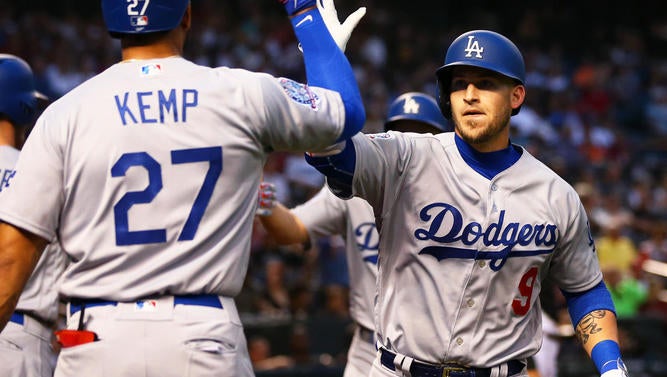
With one very notable exception, the Dodgers have largely built their roster with a series of smaller, lower profile trades that have paid off big. That is the M.O. of president of baseball operations Andrew Friedman. Even dating back to his days with the Rays, Friedman & Co. excelled at finding undervalued players in other organizations and turning them into big-league contributors.
Coming up through the minors Austin Barnes was a stathead fave because of his high contact rates, his on-base ability, and his ability to catch and play second base. The Dodgers acquired him from the Marlins in the Dee Gordon trade a few years back. Gordon, Dan Haren, and Mel Rojas Jr. went to Miami while Barnes, Andrew Heaney, Enrique Hernandez, and Chris Hatcher went the other way. (Heaney was immediately flipped to the Angels for Howie Kendrick.) Barnes struggled this season following what looked like a breakout 2017, though he remains a quality defensive catcher.
Two offseasons ago the Dodgers tried like crazy to pry Brian Dozier away from the Twins. It didn't work out, so they instead acquired Logan Forsythe from the Rays. Then, this summer, they sent Forsythe (and prospects) to Minnesota for Dozier. Dozier didn't play all that well after the trade (.182/.300/.350 with Los Angeles) and has been relegated to platoon second base duty in the postseason. This is still a pretty nice guy to have sitting your bench though.
Another undervalued player the Dodgers were able to pry away from another organization. Los Angeles sent two low level prospects to the Reds for Dylan Floro, Zach Neal, and international bonus money earlier this year. Neal threw one inning for the Dodgers before being released and who knows how the international bonus money will be spent, but Floro quickly became a reliable reliever for manager Dave Roberts. In 27 2/3 innings with the Dodgers he allowed five runs and struck out 31. He also posted a strong 52.2 percent ground ball rate.
Prior to the trade deadline the Dodgers upgraded their bench with David Freese, who has long been a terror against left-handed pitching. He hit .385/.489/.641 with two home runs in 19 games with Los Angeles and is a trusted top of the lineup platoon bat. The Dodgers gave up a rookie ball pitcher in the Dominican Summer League to improve the margins of their roster in advance of the postseason. This is the type of move every contender tries to make prior to the August 31 postseason-eligibility trade deadline.
In his first significant move with the Dodgers, Friedman shipped the popular but expensive and (at least slightly) overrated Matt Kemp to the division rival Padres for the sneaky productive Grandal. The full trade details:
- Dodgers get: Grandal, Joe Wieland, Zach Eflin
- Padres get: Kemp, Tim Federowicz, and $32 million
At the time of the trade Kemp had $107 million left on his contract, so the Dodgers ate about 30 percent of it. Although Grandal has struggled this postseason, both at the plate and behind it, he hit 20-plus home runs for the third straight season and again rated as a strong pitch-framer. Kemp is the bigger name but, when you factor in his position and defense, Grandal has been the better all-around player since the trade.
Hernandez, along with Barnes, was part of the big Marlins trade that sent Gordon to Miami. He spent the last few seasons as a quality utility man before finally emerging as an everyday option this year, largely because he hit right-handed pitching better than ever (.252/.338/.495). Hernandez has started nine of the Dodgers' 11 postseason games at three different positions (second base, center field, right field).
At the 2016 trade deadline the Dodgers bought into Rich Hill's rebirth and acquired him (and Josh Reddick) from the A's for pitching prospects Jharel Cotton, Grant Holmes, and Frankie Montas. Things went so well the Dodgers re-signed Hill to a three-year deal the offseason before last despite his limited track record. He threw 132 2/3 innings with a 3.66 ERA this season and has been the club's fourth starter in October.
(Technically Hill was a free agent signing, but since we're looking at how the Dodgers originally acquired these players, we're lumping him in with the trades.)
Gosh, the Dodgers sure do love complicated trades, don't they? Almost three years to the day after sending Kemp to the Padres for Grandal, the Dodgers re-acquired Kemp from the Braves. The full trade:
- Dodgers acquire: Kemp
- Braves acquire: Charlie Culberson, Adrian Gonzalez, Scott Kazmir, Brandon McCarthy, and $4.5 million
This trade was motivated almost exclusively by money. For both teams. The total money was a wash, but the $38.5 million remaining on Kemp's contract was spread across 2018-19 wheres the money owed to Gonzalez, Kazmir, and McCarthy was all owed in 2018. The Dodgers were able to spread the money across two years to improve their luxury tax situation. The Braves pushed all the money up front and will go into this offseason ready to spend now that those contracts are off their books.
Truth be told, Kemp was not expected to help the Dodgers much this year. There was widespread speculation they would release him before Opening Day. Instead, Kemp got in better shape over the winter, had a tremendous spring training, and earned a spot on the Opening Day roster. He hit .290/.338/.481 with 21 home runs this year and started the All-Star Game.
Once Corey Seager went down with Tommy John surgery, it felt like a matter of "when" the Dodgers would acquire Manny Machado, not "if." The deal finally went down at the All-Star break -- the last time Machado wore an Orioles uniform was in the All-Star Game -- with Machado going to Los Angeles for five prospects: Yusniel Diaz, Rylan Bannon, Dean Kremer, Zach Pop, and Breyvic Valera. MLB.com ranks Diaz as the game's 52nd best prospect. Machado was good if not slightly underwhelming after the trade (.273/.338/.487), but he's had some key postseason hits, and he seems to have gone full heel as well. For Manny, this postseason has been ... eventful. It's been eventful.
It was a surprise when the Dodgers didn't bring in more relief help at the July 31 non-waiver trade deadline. They instead waited until the August 31 postseason-eligibility deadline to acquire Ryan Madson from the Nationals. Pitching prospect Andrew Istler went the other way. Madson allowed six runs in 8 1/3 innings after the trade but has allowed one run in 6 1/3 innings during the postseason, giving Los Angeles that extra layer of bullpen depth they needed.
It is trades like this that have helped the Dodgers win six straight NL West titles. They picked up Chris Taylor from the Mariners for busted former first rounder Zach Lee, and, since the trade, Taylor has put up a .267/.338/.464 batting line while playing five different positions. Taylor was not as good in 2018 as he was in 2017 -- he led the NL with 178 strikeouts this year -- but he is a comfortably above-average player with incredible versatility. What a weapon for an NL club. For any club, really.
You know you've made a good trade when the opposing GM admits he made a colossal mistake on Twitter. John Coppolella, who is no longer the Braves GM (not because of this trade), sent Alex Wood to the Dodgers in a big three-team deal at the 2015 trade deadline. By June 2016, Coppolella was wishing he could take it back.
Yes -- bad trade for us and one that I wish we had back -- all we can do is learn from it and move forward https://t.co/LXvZPoKSwK
— Atlanta Braves (@Braves) June 24, 2016
Not often you'll hear a GM admit defeat like that. The Dodgers completely swindled the Braves in this trade. Here are the full trade details:
- Dodgers get: Wood, Bronson Arroyo, Luis Avilan, Jim Johnson, Mat Latos, Michael Morse, Jose Peraza
- Braves get: Zach Bird, Hector Olivera, Paco Rodriguez, competitive balance draft pick
- Marlins get: Victor Araujo, Jeff Brigham, Kevin Guzman
For all intents and purposes, the Dodgers took on Arroyo's contract and Morse's contract to get Wood. Olivera was the key piece going the other way, and he was so bad the Braves traded him to the Padres a year later to get Kemp (baseball is a flat circle), and the Padres released Olivera immediately. They just wanted to unload Kemp's contract.
Wood has a 3.46 ERA in 434 2/3 innings with the Dodgers and has been occasionally spectacular. Los Angeles bumped him to the bullpen for the postseason.
Free Agent Signings
Generally speaking, free agency is the least efficient way to acquire talent in terms of cost vs. production. And the Dodgers, believe it or not, have largely avoided massive free agent contracts under Friedman. In fact, only two players on the postseason race originally joined with the team as free agents, and both signed minor-league contracts.
What a story. Max Muncy was released by the Athletics at the end of spring training 2017 and he hooked on with the Dodgers shortly thereafter. He was so far out of the picture last year that he didn't even get a September call-up. Injuries led to a call-up earlier this season and Muncy responded with a .263/.391/.582 batting line in 35 homers in 137 games. Goodness. He's now a middle of the order fixture for Los Angeles.
Has there been a better minor-league contract handed out in the last 25 years or so? I'm not sure. The Dodgers signed Justin Turner after the Mets non-tendered him, thinking he could be a solid depth option and utility player. Then he retooled his swing and turned into one of the best hitters in the NL. Good enough to earn him a four-year contract worth $64 million two offseasons ago. Turner hit .312/.406/.518 around a wrist injury this year and he continues to mash in the postseason. He's a career .310/.425/.516 hitter with 30 RBI in 44 games in October. Credit where it's due: Former GM Ned Colletti signed Turner, not Friedman.
International Free Agency
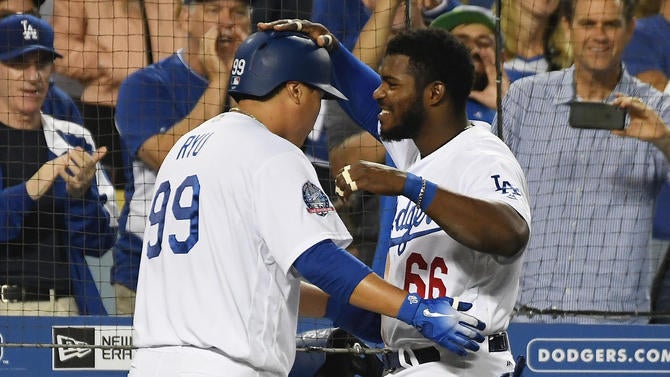
There are two ways for teams to acquire amateur talent: The draft and international free agency. Under Friedman, the Dodgers have been very aggressive internationally, both in Latin America and Asia. That has always been the case, dating back to the days of Fernando Valenzuela. This isn't a recent development.
The Dodgers originally signed Pedro Baez as a position player. He was an infielder (a third baseman, specifically), who never really figured out how to hit. A .248/.309/.392 batting line in over 2,000 minor-league plate appearances led to a trial on the mound and Baez is now a sneaky effective setup man. Yes, he works painfully slow. But he also has a 3.01 ERA (130 ERA+) and 287 strikeouts in 269 1/3 career innings. This postseason Baez has allowed four baserunners while striking out 10 in 6 2/3 scoreless innings.
Once upon a time Kenley Jansen was a light-hitting catcher. The Dodgers signed him out of Curacao as a 16-year-old in 2004, and, after a few seasons, it became clear he wasn't going to hit enough to reach the big leagues. Jansen is a career .229/.310/.337 hitter in nearly 1,000 minor-league plate appearances. Even at catcher, where the offensive bar isn't very high, that's not going to cut it.
The Dodgers decided to put Jansen on the mound in 2009 and a year later he was in the big leagues. Three years later he was closing and seven years later he signed a five-year contract worth $80 million. The move to the mound worked out pretty well, eh? Jansen has been more home run prone this year than ever before, but, over the last few seasons, he's been arguably the best closer in the game. For my money his "California Love" entrance at Dodger Stadium is the coolest closer entrance in the game today.
Kenta Maeda was not an amateur international free agent. He signed with the Dodgers after spending eight years with the Hiroshima Carp in Japan. Hiroshima posted him for MLB teams during the 2015-16 offseason, and eventually he came to terms with the Dodgers on a unique eight-year contract. The deal includes $25 million guaranteed plus $75 million in bonuses. A preexisting elbow injury led to the unique contract. The Carp received a $20 million release fee for posting Maeda.
In his three regular seasons with the Dodgers, Maeda has a 3.80 ERA in 435 1/3 innings, though the team moved him into the bullpen late this season. By my unofficial count, Maeda has earned $15.95 million of that $75 million in available playing time-based bonuses to date.
When the Dodgers initially signed Yasiel Puig, it sent a shockwave through baseball. Baseball America international guru Ben Badler spoke to several evaluators who were shocked by the contract at the time. "I don't know. I don't know what's going on in Dodger land. They must have seen something," said one evaluator to Badler.
Puig, who was 21 when he joined the Dodgers, firmed up his body soon after signing and showed the long layoff -- Puig did not play in competitive games for over a year after defecting from Cuba -- had no ill-effects. He reached the big leagues within a year of signing and was an impact player right away, hitting .305/.386/.502 from 2013-14. The 2015-16 seasons were disappointing, but Puig had a very good 2018 and he put NLCS Game 7 away with a monster three-run home run against Jeremy Jeffress.
Similar to Maeda, Hyun-Jin Ryu was not an amateur international free agent. He spent seven years with the Hanwha Eagles in Korea before coming over to MLB. The Dodgers paid a $25.7 million posting fee to Hanwha to secure his negotiating rights, then signed him to a six-year contract worth $36 million. Ryu was fantastic from 2013-14 before major shoulder problems sabotaged his 2015 and 2016 seasons. A groin injury limited him to 82 1/3 innings this year, but, in those 82 1/3 innings, he posted a 1.97 ERA (198 ERA+). Ryu was also fantastic in his two postseason starts before getting rocked in NLCS Game 6.
Julio Urias was a significant amateur pitching prospect as a teenager, but some teams were scared away by a left eye condition. Urias had a cancerous tumor removed from his eye as a child and it left him with a droopy eyelid that did not hurt his vision. The Dodgers signed him and he quickly blossomed into a potential ace and the top pitching prospect in the game. Urias threw 77 innings with a 3.39 ERA (119 ERA+) as a 19-year-old in 2016, but major shoulder surgery cost him most of the 2017 and 2018 seasons. He returned late in the regular season and worked out of the bullpen in the NLCS.
Other Notables
Those 25 players above made up the Dodgers' roster for the NLCS. Several other players spent time with Los Angeles this year -- in some cases, they spent the entire season on the big-league roster -- and helped get the club to the postseason, but are not expected to be on the World Series roster. Here are the Dodgers' remaining notables and how they were acquired.
Yet another complicated trade. The Dodgers acquired southpaw sinkerball specialist Scott Alexander from the Royals in a three-team trade with the White Sox over the winter. The full trade details:
- Dodgers acquire: Alexander, Jake Peter
- Royals acquire: Erick Mejia, Trevor Oaks
- White Sox acquire: Luis Avilan, Joakim Soria, and cash
Alexander spent just about the entire season on the MLB roster (he made a four-game cameo in Triple-A) and was on the NLDS roster, though the Dodgers dropped him in favor of Urias in the ALCS. He is a candidate to be added to the World Series roster. At the very least, he will travel with the team and be available as an injury replacement.
Shoulder trouble limited Josh Fields to 41 very good innings this season (2.20 ERA and 178 ERA+), though some of the underlying numbers are scary, and the Dodgers have excluded him from their postseason roster. Los Angeles initially acquired Fields from the Astros for first base/outfield prospect Yordan Alvarez, who MLB.com currently ranks as the 42nd best prospect in baseball. Fields has been serviceable, but that trade might come back to haunt the Dodgers.
In what remains a weird trade, the Rays essentially salary dumped Corey Dickerson on the Pirates last winter. The return: Daniel Hudson, who was released during spring training, and a lower level prospect. The Dodgers scooped Hudson up and he threw 46 innings with a 4.11 ERA (95 ERA+) during the summer. Because he was released, Tampa Bay was on the hook for his $5.5 million salary. The Dodgers only had to pay Hudson the pro-rated portion of the league minimum.
Seager, like Bellinger and Kershaw, is a gift left to the Friedman regime by Colletti. Colletti drafted Seager out of his North Carolina high school, where his hitting acumen and baseball bloodlines -- his brother Kyle Seager mans third base for the Mariners -- were obvious. Corey was the unanimous NL Rookie of the Year in 2016 and an NL MVP candidate in 2017.
This season Seager was limited to 26 games by an elbow injury that dated back to last season, an elbow injury that required Tommy John surgery in May. The Dodgers had to scramble at shortstop -- Taylor saw plenty of action at short, his natural position, following Seager's injury -- before trading for Machado. Seager is still rehabbing and will not be on the World Series roster. He is expected to be ready in time for Spring Training, however.
Ross Stripling had a rather unique development path, and it's a story of perseverance. He was a football and basketball player at his Texas high school who didn't start playing baseball until he broke his leg, got bored, and began tossing around a baseball as a way to pass time. Stripling spent four years at Texas A&M before being drafted by Los Angeles. He underwent Tommy John surgery while in the minors and has since settled in as a serviceable swingman for the Dodgers. Stripling threw 122 innings with a 3.02 ERA (128 ERA+) this season and was an All-Star before landing on the disabled list and fading late. He is a potential candidate for the World Series roster.
As part of their rebuild the Phillies traded away just about all their notable veterans, including heart-and-soul player Chase Utley. The Dodgers added him at the 2015 trade deadline for two prospects, and they've subsequently re-signed Utley as a free agent in each of the last three offseasons. He's settled into a part-time role with Los Angeles and was not on the NLDS or NLCS roster, but make no mistake, Utley is still a force to be reckoned with in the clubhouse. Seager and Hernandez have credited Utley's leadership for helping them become the players they are today.










